Intelligent dance music is a style of electronic music originating in the early 1990s, defined by idiosyncratic experimentation rather than specific genre constraints. It emerged from the culture and sound palette of electronic and rave music styles such as ambient techno, acid house, Detroit techno and breakbeat; it has been regarded as better suited to home listening than dancing. Prominent artists associated with it include Aphex Twin, Autechre, Squarepusher, Venetian Snares, Boards of Canada, Telefon Tel Aviv, μ-Ziq, the Black Dog, the Future Sound of London, and Luke Vibert.
Synth-pop is a subgenre of new wave music that first became prominent in the late 1970s and features the synthesizer as the dominant musical instrument. It was prefigured in the 1960s and early 1970s by the use of synthesizers in progressive rock, electronic, art rock, disco, and particularly the Krautrock of bands like Kraftwerk. It arose as a distinct genre in Japan and the United Kingdom in the post-punk era as part of the new wave movement of the late 1970s to the mid-1980s.
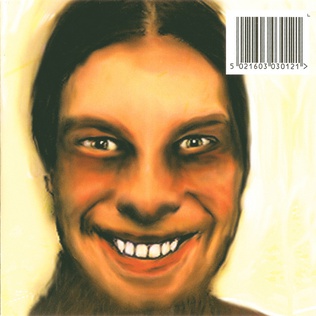
...I Care Because You Do is the third studio album by electronic musician Richard D. James under the alias Aphex Twin, released on 24 April 1995 by Warp. Containing material recorded between 1990 and 1994, the album marked James's return to a percussive sound following the largely beatless Selected Ambient Works Volume II (1994), and pairs abrasive rhythms with symphonic and ambient elements. The cover artwork is a self-portrait by James.

Rick Dangerous is a platform game developed by Core Design for the Acorn Archimedes, Amiga, Atari ST, Amstrad CPC, ZX Spectrum, Commodore 64, and MS-DOS. The game was released in 1989 and published by MicroProse on the Firebird Software label in the UK, and on the MicroPlay label in America. It was also published in Spain by Erbe Software. Later, it was released with two other games, Stunt Car Racer and MicroProse Soccer, on the Commodore 64 Powerplay 64 cartridge. The game was followed by a sequel, Rick Dangerous 2, in 1990. Loosely based on the Indiana Jones film franchise, the game received mixed reviews from critics.
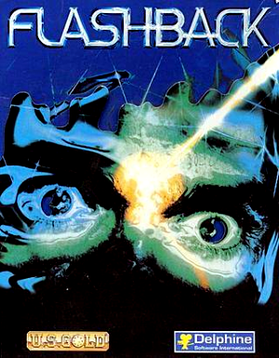
Flashback, released as Flashback: The Quest for Identity in the United States, is a 1992 science fiction cinematic platform game developed by Delphine Software of France and published by U.S. Gold in the United States and Europe, and Sunsoft in Japan.
1989 saw many sequels and prequels in video games, such as Phantasy Star II, Super Mario Land, Super Monaco GP, along with new titles such as Big Run, Bonk's Adventure, Final Fight, Golden Axe, Strider, Hard Drivin' and Teenage Mutant Ninja Turtles. The year also saw the release of the Sega Genesis and TurboGrafx-16 in North America, and the Game Boy worldwide along with Tetris and Super Mario Land.

Jungle Strike is a video game developed and published by Electronic Arts in 1993 for the Sega Genesis/Mega Drive. The game was later released on several other consoles such as the Super Nintendo Entertainment System (SNES), and an upgraded version was made for DOS computers. The Amiga conversion was the responsibility of Ocean Software while the SNES and PC DOS versions were that of Gremlin Interactive, and the portable console versions were of Black Pearl Software. It is the direct sequel to Desert Strike and is the second installment in the Strike series. The game is a helicopter-based shoot 'em up, mixing action and strategy. The plot concerns two villains intent on destroying Washington, D.C. The player must use the helicopter and occasionally other vehicles to thwart their plans.

There have been several video games based on the 1991 film Hook. A side-scrolling platform game for the Nintendo Entertainment System (NES) and Game Boy was released in the United States in February 1992. Subsequent side-scrolling platform games were released for the Commodore 64 and the Super Nintendo Entertainment System (SNES), and an arcade beat ‘em up by Irem later in 1992, followed by versions for the Sega CD, Sega Genesis, and Sega's handheld Game Gear console in 1993.
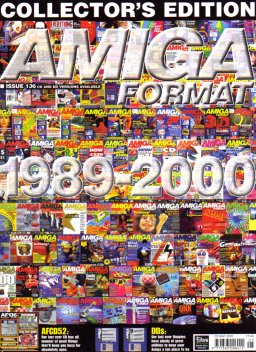
Amiga Format was a British computer magazine for Amiga computers, published by Future plc. The magazine lasted 136 issues from 1989 to 2000. The magazine was formed when, in the wake of selling ACE to EMAP, Future split the dual-format title ST/Amiga Format into two separate publications. At the height of its success the magazines sold over 170,000 copies per month, topping 200,000 with its most successful ever issue.
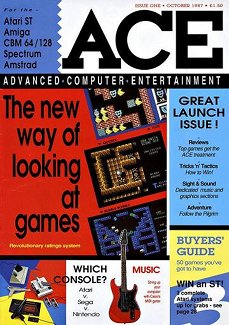
ACE was a multi-format computer and video game magazine first published in the United Kingdom by Future Publishing and later acquired by EMAP.

Worms is a 2D artillery tactical video game developed by Team17 and released in 1995. It is the first game in the Worms series of video games. It is a turn based game where a player controls a team of worms against other teams of worms that are controlled by a computer or human opponent. The aim is to use various weapons to kill the worms on the other teams and have the last surviving worm(s).

World Tour Golf is a 1986 video game by Evan and Nicky Robinson, Paul Reiche III and published by Electronic Arts for Commodore 64, Amiga, Apple IIGS, and DOS.

Richard David James, best known as Aphex Twin, is an Irish-born British musician, composer and DJ. He is known for his idiosyncratic work in electronic styles such as techno, ambient, and jungle. Journalists from publications including Mixmag, The New York Times, NME, Fact,Clash and The Guardian have called James one of the most influential or important artists in contemporary electronic music.

Fun School is a series of educational packages developed and published in the United Kingdom by Europress Software, initially as Database Educational Software. The original Fun School titles were sold mostly by mail order via off-the-page adverts in the magazines owned by Database Publications. A decision was made to create a new set of programs, call the range Fun School 2, and package them more professionally so they could be sold in computer stores around the UK. Every game comes as a set of three versions, each version set to cater for a specific age range.

Selected Ambient Works 85–92 is the debut studio album by Aphex Twin, the pseudonym of British electronic musician Richard D. James. It was released on 9 November 1992 through Apollo Records, a subsidiary of Belgian label R&S Records. The album consists of ambient techno tracks recorded onto cassette reputedly dating as far back as 1985, when James was thirteen to fourteen years old. An analogue remaster of the album was released in 2006, followed by a digital remaster in 2008.

Robinson's Requiem is a 1994 survival simulation video game developed and originally published by Silmarils exclusively in Europe for the Atari ST, Atari Falcon and Amiga. Taking place in the 22nd century where Earth and colonized planets are facing overpopulation, the game sees players assuming the role of Robinson officer Trepliev 1 from the Alien World Exploration department in his attempt to escape imprisonment from the fictional planet of Zarathustra alongside another AWE Robinson named Nina1, while facing several hostile creatures and dangers in order to survive.
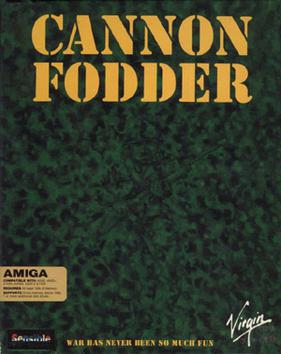
Cannon Fodder is a shoot 'em up developed by Sensible Software and published by Virgin Interactive Entertainment for the Amiga in 1993. Virgin ported the game to MS-DOS, the Atari ST and the Acorn Archimedes, as well as the Atari Jaguar, Mega Drive, SNES and 3DO. The game is military-themed and based on shooting action with squad-based tactics. The player directs troops through numerous missions, battling enemy infantry, vehicles and installations.
Scetlander was a software publisher which released titles for various 8- and 16-bit home computer systems in the 1980s and 1990s.
Aegis Sonix is a music sequencer and a score editor for the Amiga created by Aegis Development and published in 1987. The application offers a combination of a notation editor and an editor of digital sounds and is able to edit IFF music instruments and other digital sound files.













